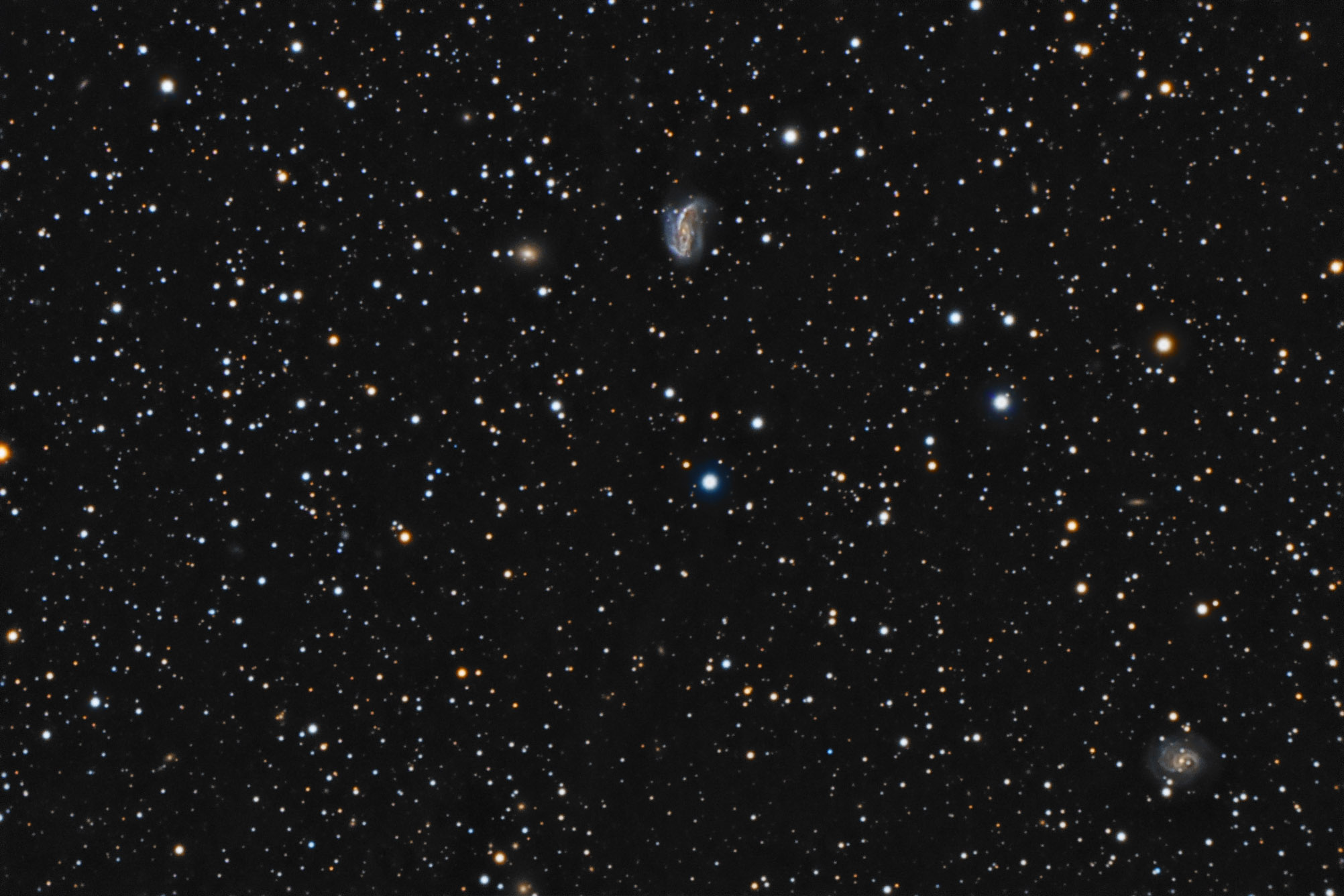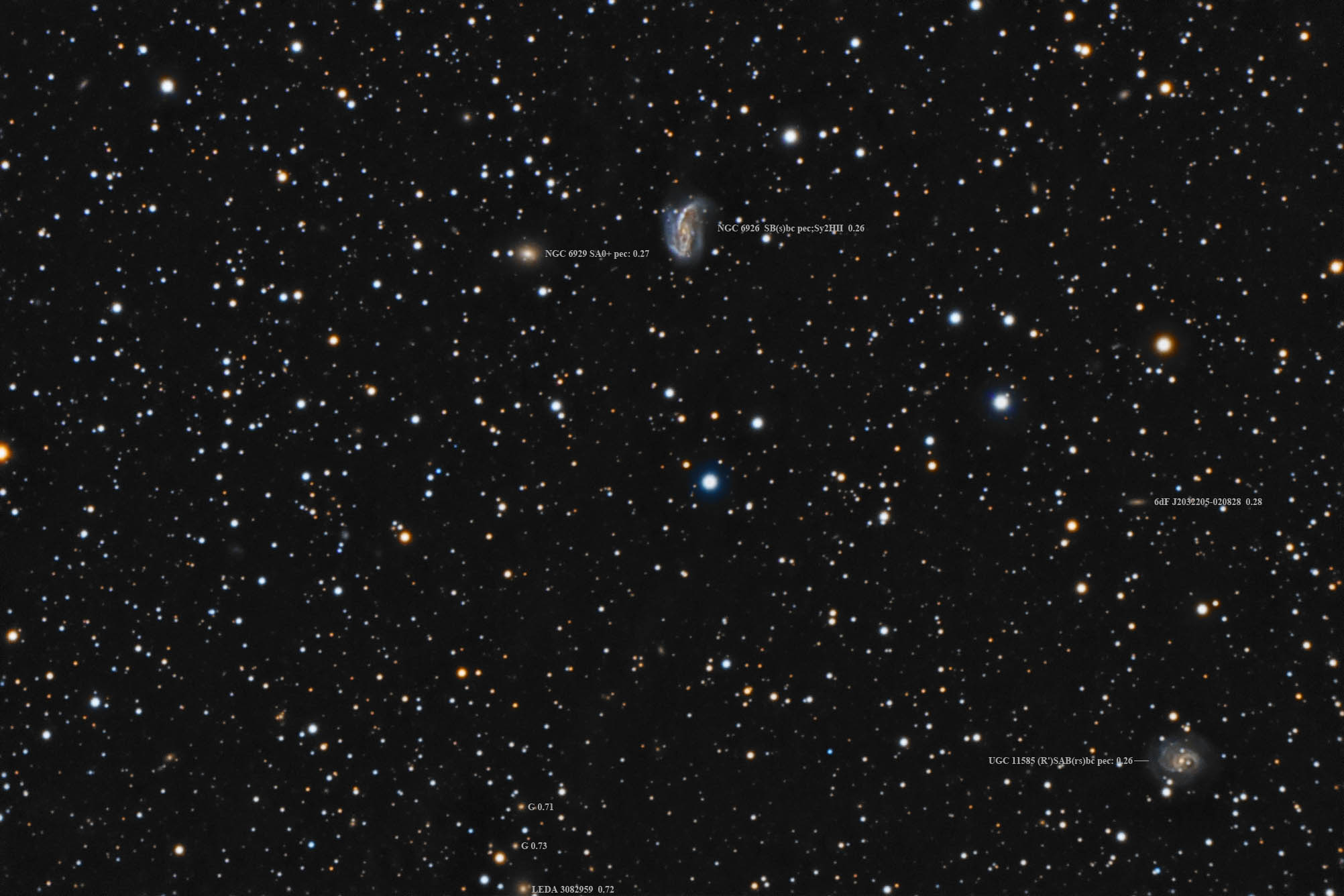| Description | Images |
Object name: NGC6926Designation(s): NGC6926, NGC2629, UGC11585, Galaxy hunting in Aquila is about like hunting polar bear in the Antarctic. Unlike Antarctic polar bears or arctic penguins, there are a few galaxies in Aquila worth looking at if you look long and hard enough to find them. NGC 6926 is one such galaxy. It is a huge rather disrupted spiral galaxy some 150,000 light years tall if you count the short plume to the north and 130,000 if you don't. Either way, it is a very large spiral. Its northern arm is drawn out and has two major star clouds in it. The southern is so disrupted it has a hole in the middle of it. It is part of a group of galaxies. Two others in the group are in my image, NGC 6929, a peculiar SA0+ galaxy to its east and UGC 11585 in the southwest corner of my image which is also listed as a peculiar galaxy. The status of NGC 6929 as peculiar is a bit questionable as indicated by the colon in the "pec:" designation. UGC 11585, however, has no question about its peculiarity. Like NGC 6929 it has an apparent hole in its disk. It looks like I overprocessed it so the field star developed the dreaded "Panda Eye" dark circle. But the dark area is real. An ordinary looking edge on dwarf disk galaxy, 6dF J2032205-020828 may also be a member of the group. Related Designation(s):2MASS J08471577+7259081, 2MASS J20321604-0214570, 2MASS J20330610-0201384, 2MASS J20330611-0201416, 2MASX J08471585+7259082, 2MASX J20321601-0214569, 2MASX J20330610-0201390, 2MASXi J0847149+725908, 2MASXi J2032161-021457, 2MASXi J2033061-020138, 6dF J2033060-020139, 6dF J2033061-020139, 87GB 084157.0+730956, 87GB[BWE91] 0841+7309, AKARI J2033061-020146, CGCG 0842.0+7310, CGCG 2029.7-0224, CGCG 2030.5-0211, CGCG 331-062, CGCG 332-009, CGCG 373-031, CGCG 373-033, HDCE 0496 NED003, HDCE 1114 NED004, HDCE 1114 NED005, HIPASS J2032-02, HOLM 780A, HOLM 781A, IRAS 20296-0225, IRAS 20305-0211, IRAS F20296-0225, IRAS F20304-0211, LDCE 0573 NED016, LDCE 1403 NED013, LDCE 1403 NED014, LGG 162:[G93] 002, LQAC 308-002 002, MCG +00-52-032, MCG +00-52-033, MCG +12-09-010, NGC 2629, NGC 6926, NGC2629, NGC6926, NVSS J084715+725909, NVSS J203215-021520, NVSS J203306-020139, PGC 024682, PGC 064910, PGC 064939, PMN J2033-0201, SSTSL2 J203306.08-020138.6, UGC 04569, UGC 11585, UGC 11588, UGC11585, USGC U788 NED02, USGC U788 NED03, UZC J084715.8+725908, UZC J203216.0-021458, UZC J203306.0-020141, UZC-CG 078 NED03, VLSS J2033.1-0201, VV 621, [RC2] A2029-02, [VCV2001] J203306.1-020140, [VCV2006] J203306.1-020140, |

